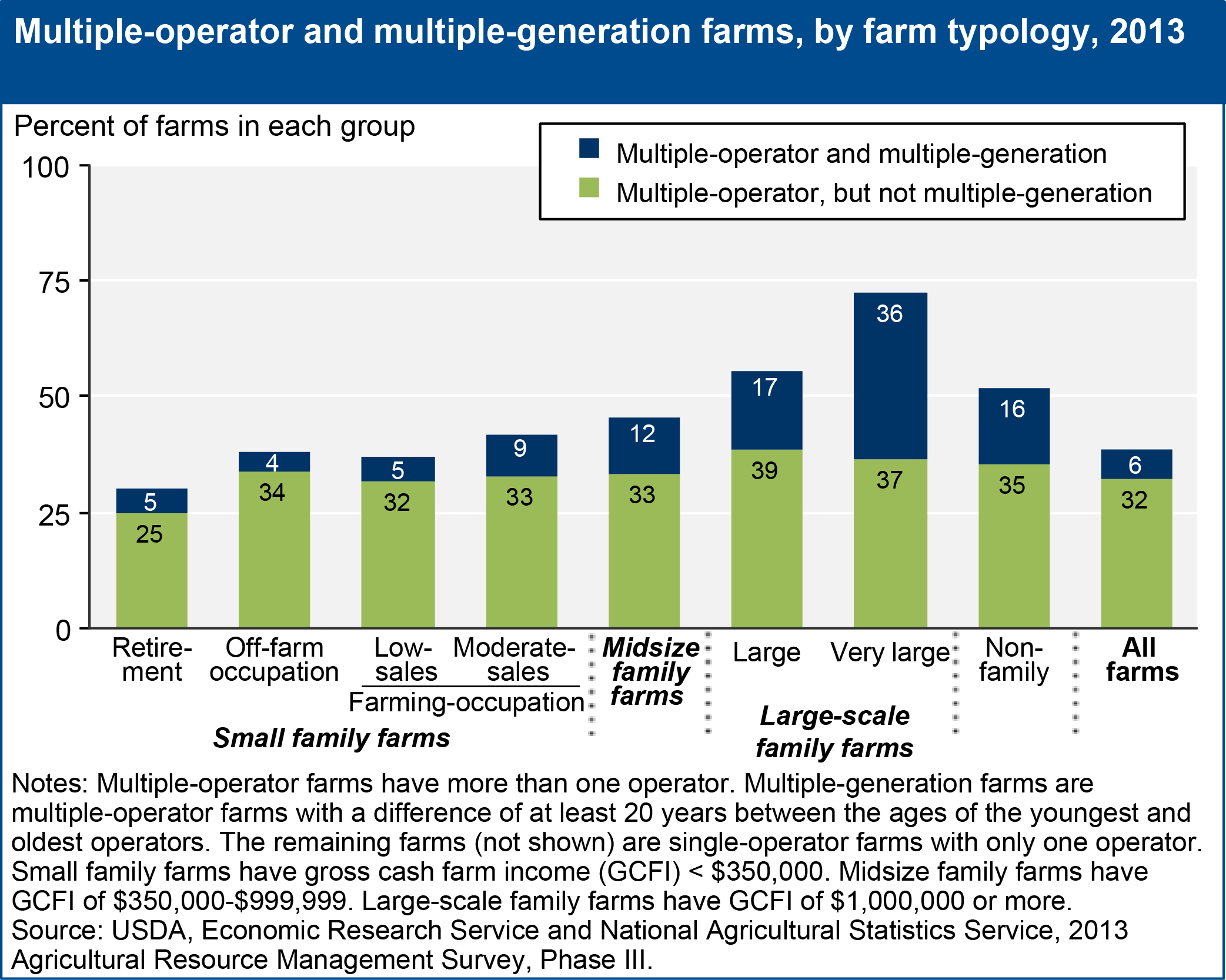Multiple-operator farms are prevalent among larger family farms
- by Robert A. Hoppe
- 1/13/2015

Larger farms often require more management and labor than an individual can provide. Additional operators can provide the necessary labor, management, and possibly other resources such as capital or farmland. Having a secondary operator may also provide a successor when an older principal operator phases out of farming. Multiple-operator farms are prevalent among large and very large family farms. In 2013, 38 percent of all U.S. farms were multiple-operator farms, while 73 percent of very large family farms had more than one operator. Since farms are generally family businesses, 68 percent of all secondary operators were spouses. About 16 percent of all multiple-operator farms (and 6 percent of all farms) were multiple-generation farms in 2013, with at least 20 years' difference between the ages of the oldest and youngest operators. The presence or absence of younger related operators may affect farm expansion and contraction decisions, depending on the principal operator's lifecycle position. This chart updates one found in the ERS report brochure, America’s Diverse Family Farms, EIB-133, December 2014.


